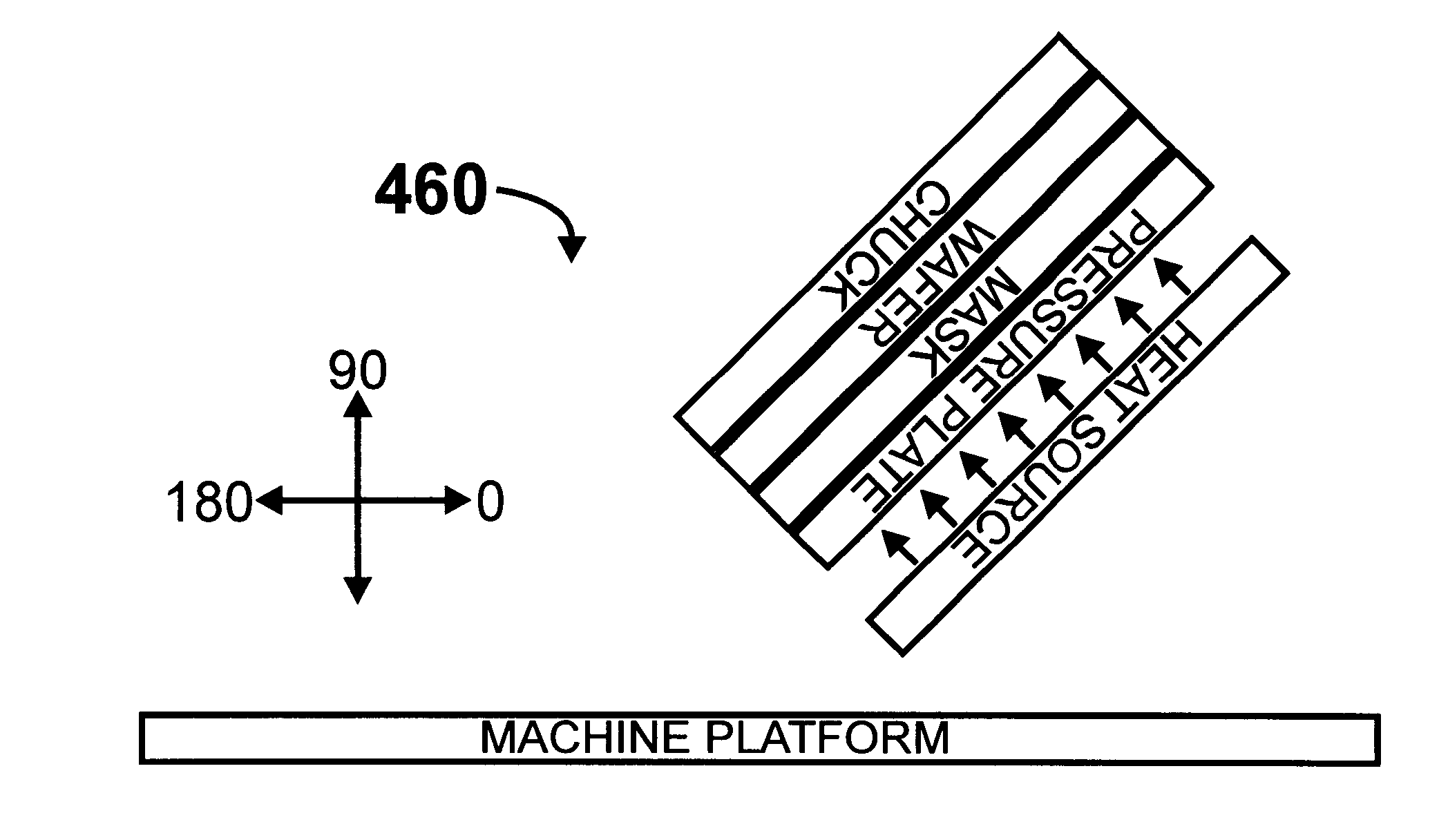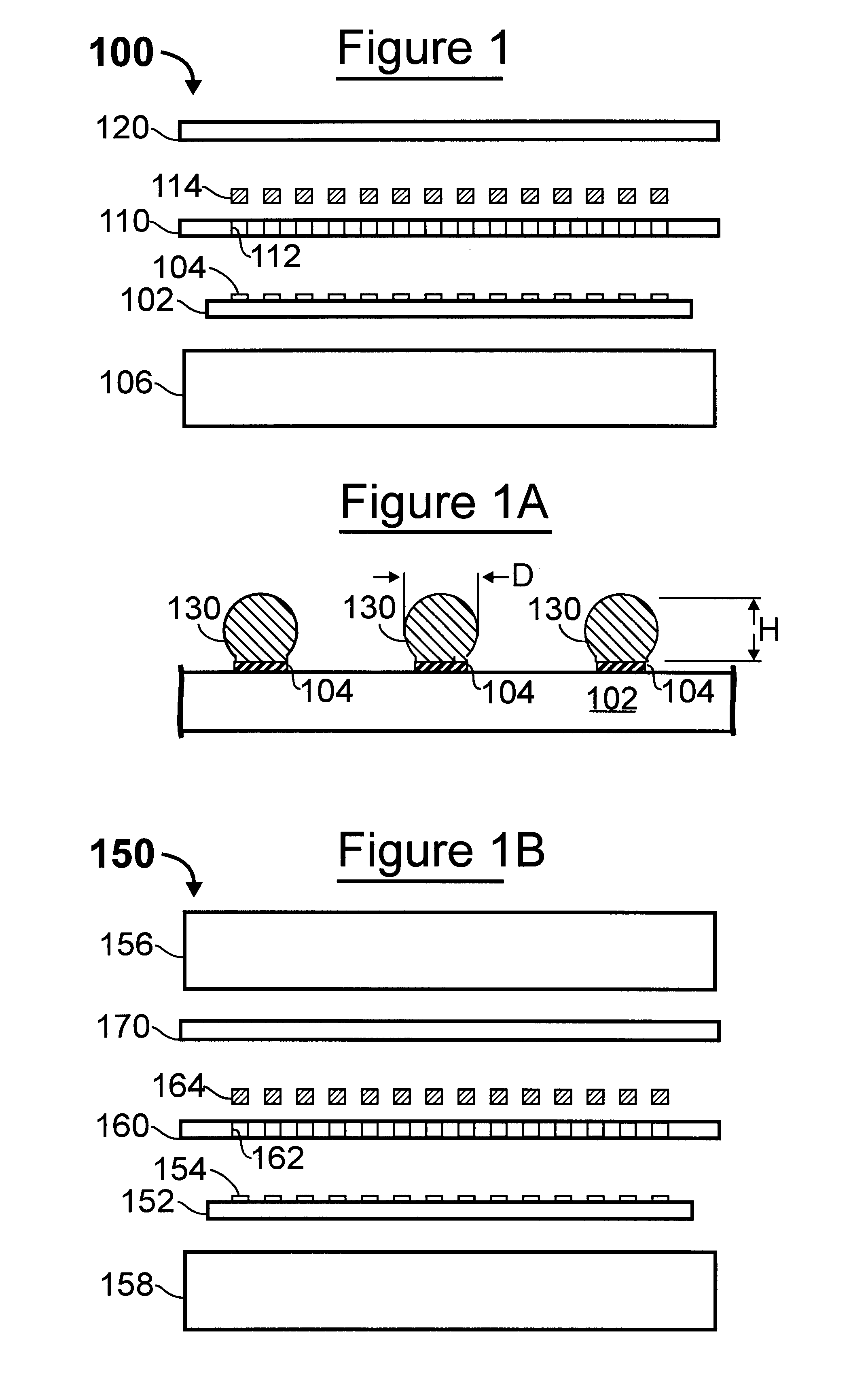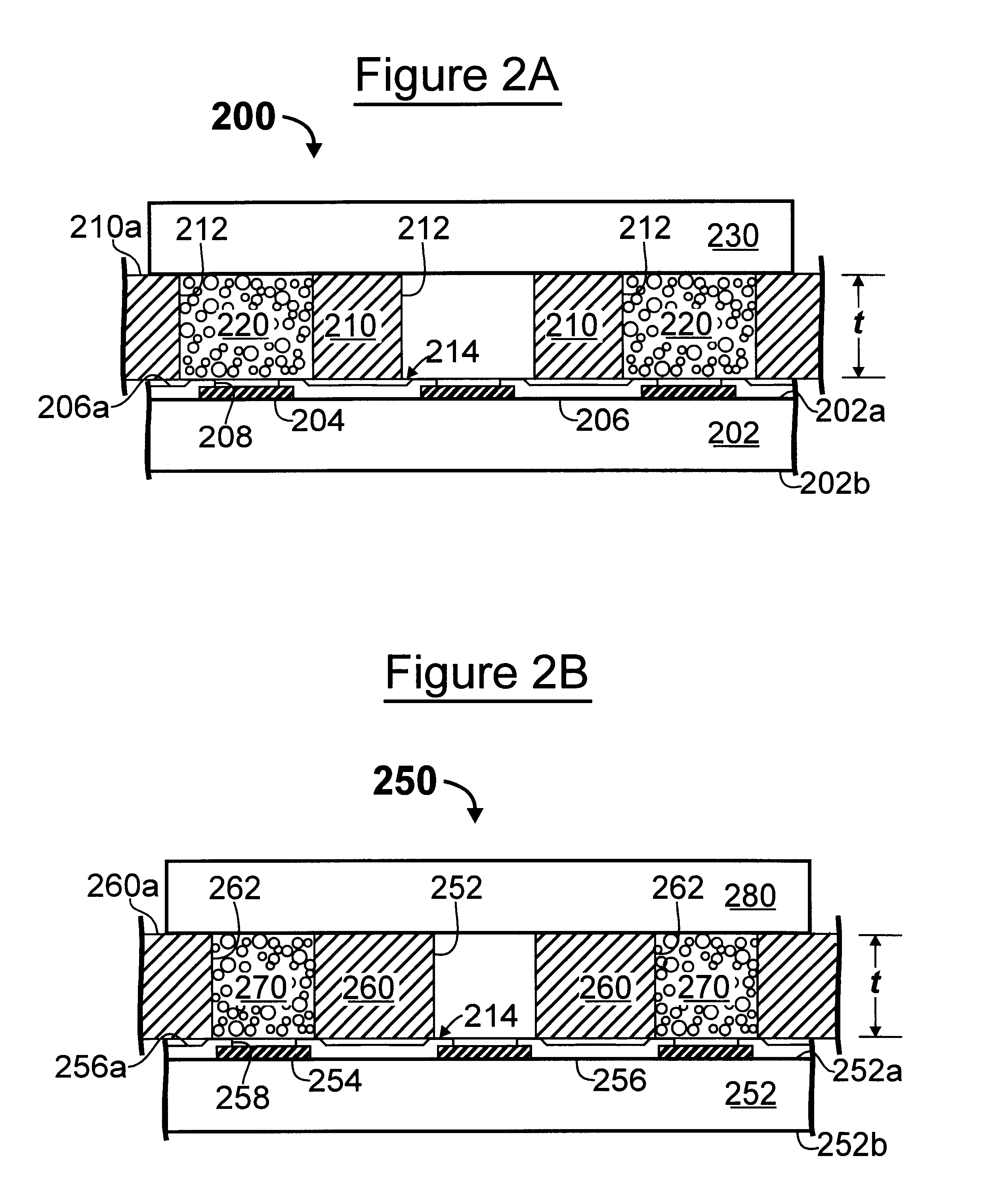Methods for forming solder balls on substrates
a technology of substrate and solder ball, which is applied in the direction of soldering apparatus, manufacturing tools, non-printed masks, etc., can solve the problems of limiting the usefulness of the technique, high cost of metal mask replacement, and inability to meet the needs of fine pitch ball bumping, so as to reduce the effective thermal mass of the chuck assembly and reduce the effect of reflowed
- Summary
- Abstract
- Description
- Claims
- Application Information
AI Technical Summary
Benefits of technology
Problems solved by technology
Method used
Image
Examples
Embodiment Construction
OF SOLDER MATERIALS AND MASK DIMENSIONS
A suitable solder material for use with the present invention comprises "63 / 37" lead / tin solder having a melting temperature of approximately 183.degree. C. (Centigrade), and has relatively large particle sizes. Large solder particles are less likely to leak out of any gap (e.g., 314) between the mask and the substrate being bumped. The following chart lists a number of exemplary dimensions and relationships between:
D, the diameter of the desired resulting solder ball;
W, the cross-dimension of the cell in the mask;
T, the thickness of the mask;
d, the particle size (e.g., diameter);
#, the approximate number of particles in a cell; and
%, the final percentage of metal, by volume, in the cell.
From the chart presented above, it is evident that:
The cross-dimension (W) of a mask cell is always greater than the thickness (T) of the mask.
The solder material filling the cells in the mask preferably comprises solder particles which of a size (d) which is r...
PUM
| Property | Measurement | Unit |
|---|---|---|
| Temperature | aaaaa | aaaaa |
| Pressure | aaaaa | aaaaa |
| Heat | aaaaa | aaaaa |
Abstract
Description
Claims
Application Information
 Login to View More
Login to View More - R&D
- Intellectual Property
- Life Sciences
- Materials
- Tech Scout
- Unparalleled Data Quality
- Higher Quality Content
- 60% Fewer Hallucinations
Browse by: Latest US Patents, China's latest patents, Technical Efficacy Thesaurus, Application Domain, Technology Topic, Popular Technical Reports.
© 2025 PatSnap. All rights reserved.Legal|Privacy policy|Modern Slavery Act Transparency Statement|Sitemap|About US| Contact US: help@patsnap.com



